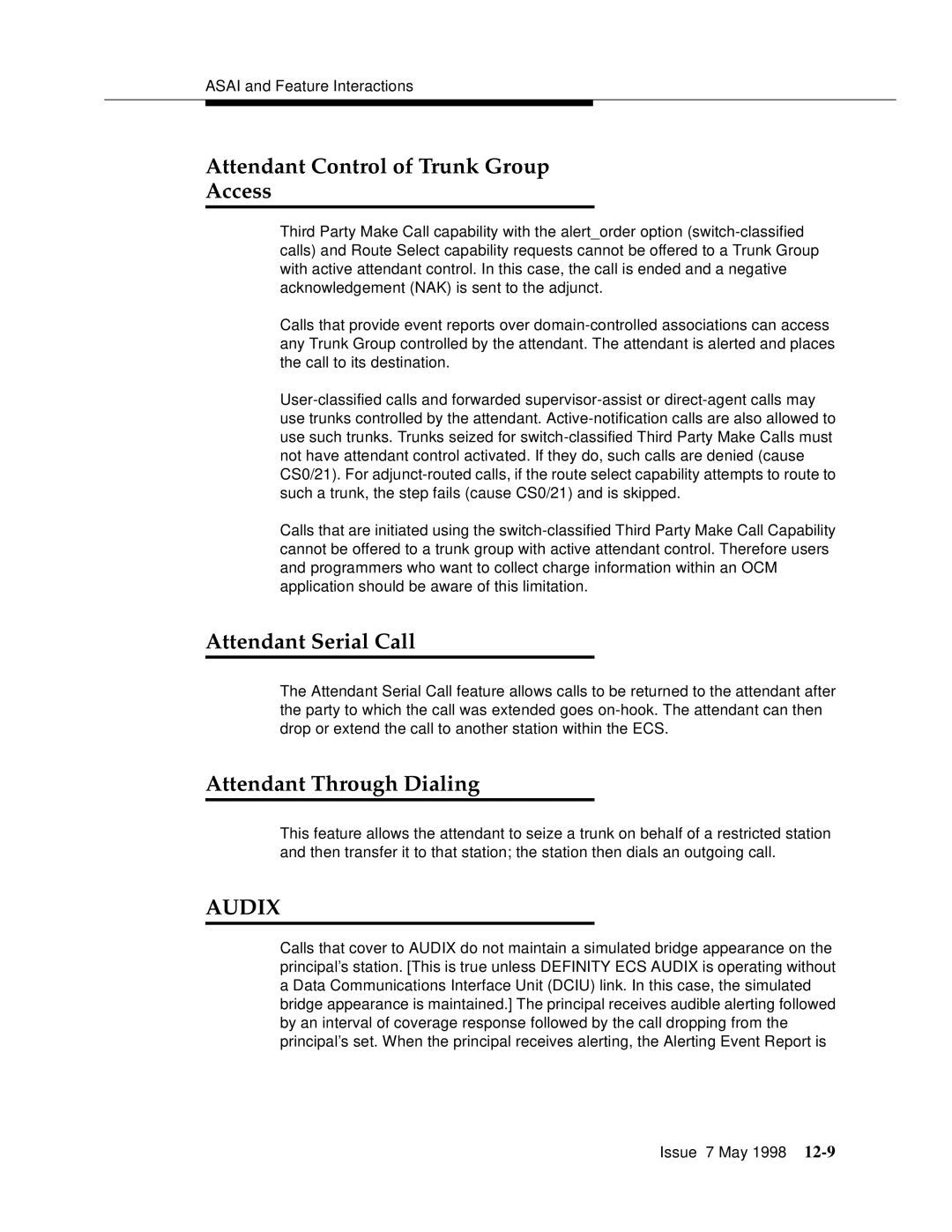
ASAI and Feature Interactions
Attendant Control of Trunk Group
Access
Third Party Make Call capability with the alert_order option
Calls that provide event reports over
Calls that are initiated using the
Attendant Serial Call
The Attendant Serial Call feature allows calls to be returned to the attendant after the party to which the call was extended goes
Attendant Through Dialing
This feature allows the attendant to seize a trunk on behalf of a restricted station and then transfer it to that station; the station then dials an outgoing call.
AUDIX
Calls that cover to AUDIX do not maintain a simulated bridge appearance on the principal’s station. [This is true unless DEFINITY ECS AUDIX is operating without a Data Communications Interface Unit (DCIU) link. In this case, the simulated bridge appearance is maintained.] The principal receives audible alerting followed by an interval of coverage response followed by the call dropping from the principal’s set. When the principal receives alerting, the Alerting Event Report is
